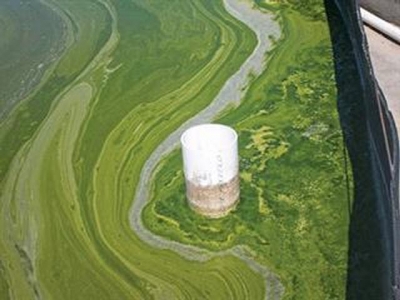Controlling diseases in aquaculture systems

Producers can use a variety of methods to limit diseases in their commercial aquaculture systems.
Green water is likely to be a problem in systems with high levels of nitrate. Photo: Nicholas James
A frequent query of entrepreneurs starting up an aquaculture enterprise is: “What disease medications do I need?” The threat of disease is always high on the list of concerns of any newcomer to the industry. The golden rule is to provide the fish with excellent water quality; this will ensure that disease rarely becomes a problem. In re-circulating aquaculture systems (RAS), where the same water is re-used many times by reticulating it through a bio-filter before pumping it back into the fish tanks, disease can spread rapidly and become a serious problem.
Wise management dictates that before any fish is introduced to the system, it should be quarantined. A fish, like any other organism, can be a carrier of a disease without showing visible symptoms, and this disease may prove fatal to other fish that have not been exposed to it. Fish originating from polluted sources, such as Hartbeespoort Dam, should also be avoided.
Species-specific
Many fish diseases are species-specific and are brought on by different conditions. For example, poor quality water affects trout and tilapia in different ways. Excessively warm water (>23oC) results in trout becoming stressed, and bacterial infections can exacerbate the situation. In contrast, water below 15oC can cause a range of diseases in tilapia. Parasitic infections such as Ichthyophthirius multifiliis (ich) and costia (white spot diseases) are often opportunistic and attack weakened fish.
Fungal infections and sensitivity
Fungus may also develop on tilapia exposed to low temperatures. It is of little use to treat the fungus, as it is a secondary affliction – the water must be warmed. Some fish strains are more sensitive than others. For example, red tilapia are less cold-tolerant than wild coloured strains, and therefore more prone to fungal infections when water temperature falls below 16oC. If it is not possible to warm the water, it may help to add salt (non-iodised sodium chloride).
During winter, we convert our grow-out system to brackish water by adding sea salt at up to five parts per thousand. This is a great deal of salt – over three quarters of a ton – but it’s affordable: salt costs only about R58 per 50kg. If you follow this method, ensure that you use agricultural-grade salt with no added chemicals.
Algae control
Ultraviolet (UV)sterilisation is a useful tool in RAS disease control, both to eliminate pathogens and for uni-cellular algae control. If a system is carrying a high nitrate load, green water will almost certainly be a problem, resulting in fish and algae competing for oxygen.
UV lamps of sufficiently high output and used for extended periods can control algae very effectively. In a system of 180 000l, six 55W UV lamps, in two cylindrical steriliser units, are adequate. These are fitted in the filtration system behind the pumps, before the water is returned to the fish tanks. These UV lamps result in clear, pathogen-free water.
Related news
Tools

Phối trộn thức ăn chăn nuôi

Pha dung dịch thủy canh

Định mức cho tôm ăn

Phối trộn phân bón NPK

Xác định tỷ lệ tôm sống

Chuyển đổi đơn vị phân bón

Xác định công suất sục khí

Chuyển đổi đơn vị tôm

Tính diện tích nhà kính

Tính thể tích ao



 The impact of atmospheric carbon dioxide, alkalinity in…
The impact of atmospheric carbon dioxide, alkalinity in…  US: Novel recycling system turns chicken manure into…
US: Novel recycling system turns chicken manure into…